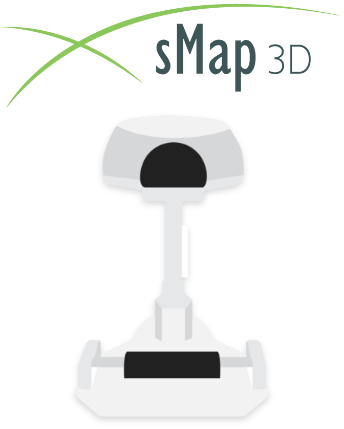We offer an extremely high level of technological precision for mapping the shape of the eye. Featuring 360-degree coverage and 10-micron precision, the sMap3D™ corneo-scleral topographer captures one million measurement points to create highly detailed maps of the cornea and sclera. The data collected informs the design of our totally customizable scleral lenses.
Reshaping your perspective.
Measure. Customize. Analyze. Order.
All in one simple platform.

“From the first time we met in our office, you have been there for us every step of the way with your positive attitude, kindness and expert training on the sMap.”
Michael Harmon, OD, Fresno, CA, Fogg, Maxwell, Lanier & Remington EyeCare
“Fitting challenging patients with Scleral Lenses using the sMap3D has reduced my chair time dramatically, improved patient’s quality of life with better vision while also giving the patient superior comfort.”
Edgar C. Aguilar, OD, Imperial, CA, Advanced Eye Care
“We have an 87% success rate with our first lens regardless of the complicated fit. Because of how much our patients adore the lens, we decided to switch many of our patients from other lens designs.”
Brianna Rhue, OD, Tamarac, FL, West Broward Eyecare Associates
“The sMap3D has transformed my scleral lens practice. It is one of the most impressive technologies that I have ever placed into my practice over a 50-year period.”
Edward Boshnick, OD, Miami, FL, Global Vision Rehabilitation Center
“We invested in the sMap3D technology in September of 2016, and since then we've had absolutely unmatched success with scleral lenses. Other companies were no match for Visionary Optics' technology and their team.”
Joshua Pass, OD, Fort Stockton, TX, West Texas Eyecare
“The sMap3D is a game-changer in fitting scleral lenses. By having more precise fitting lenses, my patients experience less foggy vision, higher comfort, and greater confidence in me as a doctor. It has also cut my remakes in half and saved me so much time.”
Thanh Mai, OD, Costa Mesa, CA, Insight Vision Center

Our next success story should be you!
Watch our video and discover a better process for scleral fitting. Driven by technology, backed by excellent customer service.
Ready to Change the Way You Fit Sclerals?
Step 1
Map your patient with our sMap3D™
Efficient, non-invasive mapping process. 3-5 minute exam, 3 gazes (straight, down up), 1 final, stitched image.
Step 2
Use a Fitting Set Lens to Over-Refract
Select a fitting set lens (software suggests best lens) or the patient’s own previous lens, place it on the eye and refract.
Step 3
Submit Your Data
Submit the sMap3D™ data and over-refraction information to Visionary Optics. The consult button in the sMapPro software provides you with complete access to our expert sMap3D™ Consultants and we’re always happy to do the heavy lifting.
Step 4
Receive Patient-Matched Scleral Lens
Our expertly trained Consultants download, review and analyze your patient’s sMap3D™ data to design the best possible lens for each patient.
Frequently Asked Questions
Corneal elevation topography maps from the sMap3D™ can be used to detect patterns of corneal disease, including keratoconus, in much the same way that placido based corneal topography units are used. The sMap3D™ is able to accurately measure extremely irregular or dry corneal surfaces that are typically either not measurable or inaccurate using placido topographers. Keratometry and power measurements are not available for fitting smaller GP lenses, orthokeratology, or IOL calculations. Like placido based topographers, the sMap3D™ does not measure corneal thickness; ultrasonic pachymetry, anterior segment OCT or a Pentacam system are usually used for this measurement.
We offer virtual software demos at your convenience! We encourage you to come meet our team and see the sMap3D™ instrument in-person at Tradeshows and Workshops that we are attending. We can arrange in-office demos, depending on geographic location and demo-instrument and personnel availability. Please contact us for more information and specifics.
The sMap3D™ instrument measures at 22” H x 18” D x 14” W. We offer an optional instrument table that is 23” x 16” with a laptop mounting arms that extends out to 23” on your preferred side (right or left).
Visionary Optics strongly encourages that your patients do not wear their scleral lenses (or corneal GPs) prior to sMap3D™ mapping because short term surface changes from lenses affects the measurement for lens design. Please make every effort to have the patient not wear their lenses the day of the sMap3D™ exam. Optimally, anywhere from 3-7 days of no scleral lens wear will ensure no scleral shape changes remain. Please review our No Scleral Lens Wear Prior to (s)Mapping – Why & How guide for suggestions on how best to communicate the importance of this to your patients and how to handle those patients who may not have functional vision without their lenses.
Yes, you can bill an sMap3D™ exam once per year as with any topography with CPT 92025. Please check out our Practice Management Tips guide for tips and information about typical visit time, invoicing, and insurance in regards to your sMap3D™ data-driven scleral fitting.


